The origin of the Bengal breed began with the cross between the Asian Leopard Cat and a domestic cat. The name of the breed derives from the scientific name (Prionailurus bengalensis) of the ALC.
There are many claims as to who first successfully bred the Bengal cat but it is documented that in the early 1960's, Jean Mill (nee Sugden) of Millwood Bengals (USA) successfully crossed a black short haired domestic tom cat with a female Asian Leopard cat called 'Malaysia'. This produced a hybrid female named Kin Kin.

Kin Kin was later bred back to her father and subsequently many generations were born. However tragedy then struck Jean's personal life and breeding efforts and so her early project ended here.
In 1980 and in trying to obtain another ALC, Jean was referred to an American pediatrician called Dr Willard Centerwall. He was involved in a breeding program where Asian Leopard Cats were crossed with domestic cats as part of a study of Feline Leukemia. Jean Mill took on some of the hybrids he produced and found a suitable foundation 'Indian Mau' male cat to begin furthering this new breed once again. He was named 'Tory of Delhi' and can be traced back in the pedigree of most early Bengals.
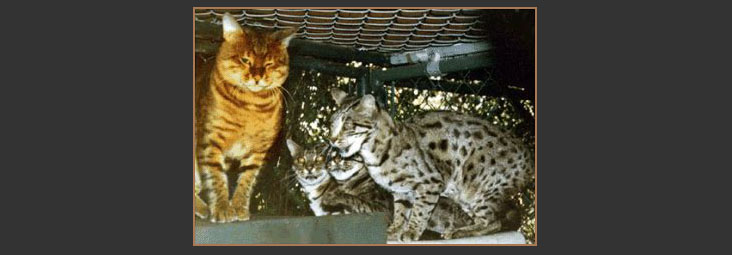
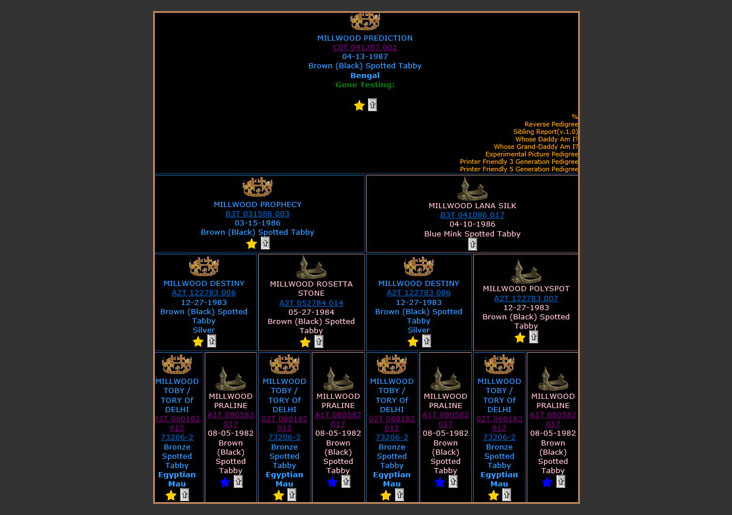
Jean had many struggles but continued her efforts and kept on introducing new ALC's into her line until 2007 when she retired from breeding Bengals. Sadly Jean has now passed away.
Such pioneers and breeders around the world have spent years carefully selecting and developing the right bloodlines to produce Bengals that have a close physical likeness to their wild ancestor but the temperament of their domestic ancestor. In 1986, Bengals were accepted as a new breed by TICA and gained championship status in 1991. Bengals were introduced to the UK in the 1990’s, making them a relatively new breed here. As the breed has since progressed, SBT Bengals have been taken back to the Asian Leopard Cat instead of the Egyptian and Indian Maus, Burmese and non-pedigreed domestic cats that were used in the early stages of development.
The Asian Leopard Cat
The Asian Leopard Cat is a small wild cat that resides in the tropical forest, scrub land, pine forest, second-growth woodland, semi-desert and agricultural regions of Southeast Asia and the Indian subcontinent.
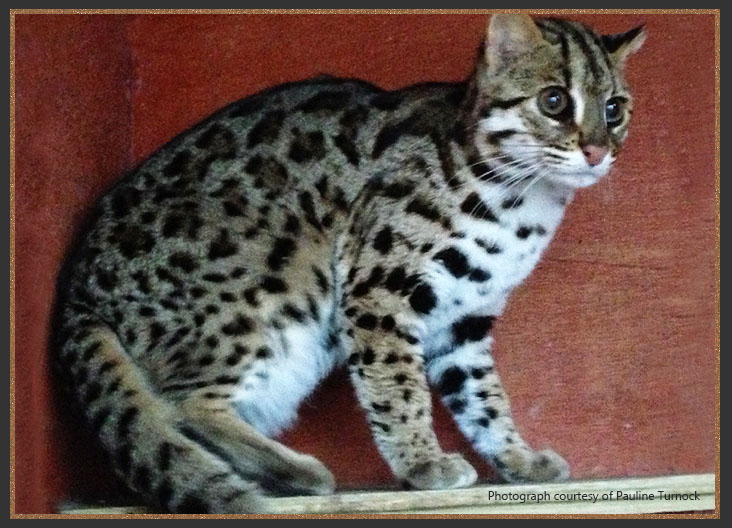
On average the ALC is as large as a domestic cat but with somewhat longer legs and a longer back. Size and weight vary between subspecies and regions as does the fur colour; it is yellow in the southern populations and silvery-grey in the northern regions.
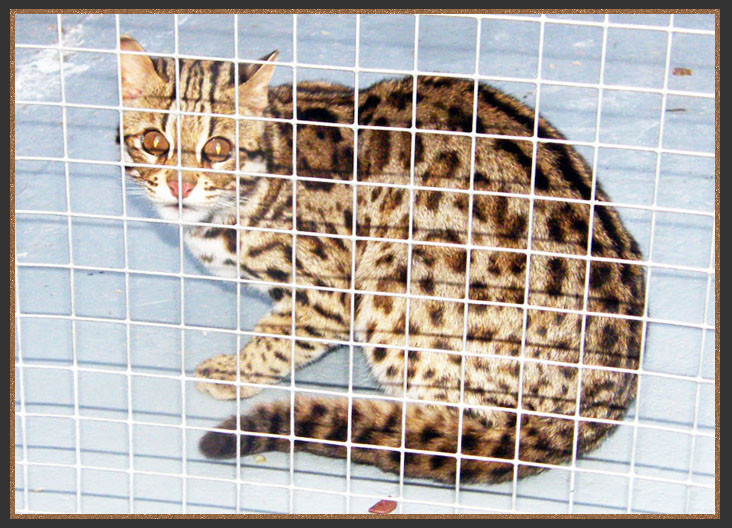
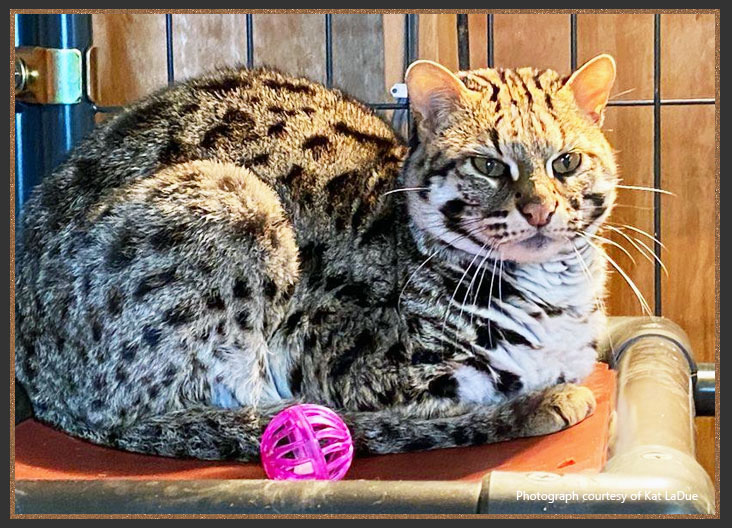
All subspecies have a thick and spotted or ringed tail, with a black tail tip, four black bands running from the forehead to the back of the neck, breaking up into elongated spots on the neck and shoulders, often forming a " broken necklace".
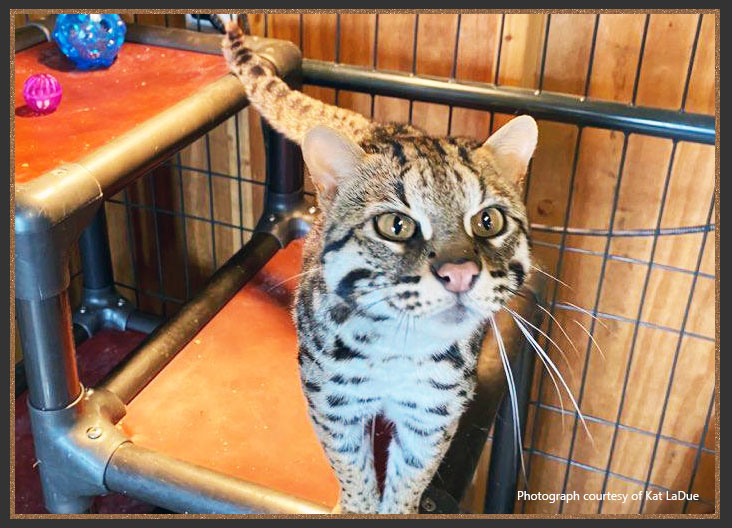
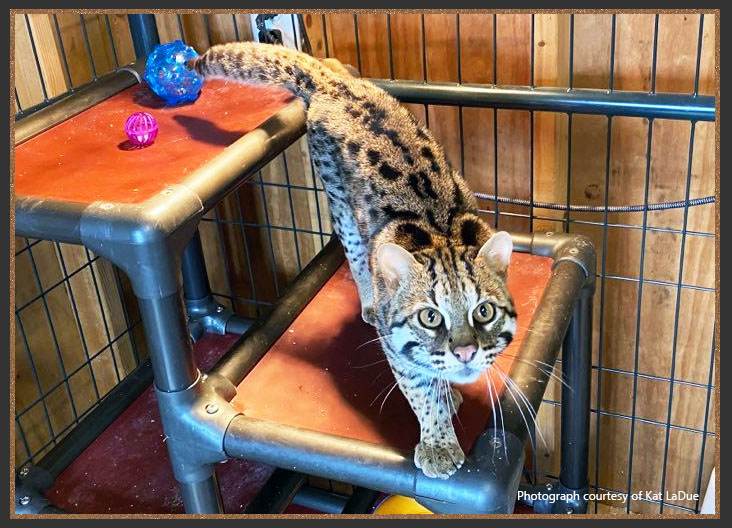
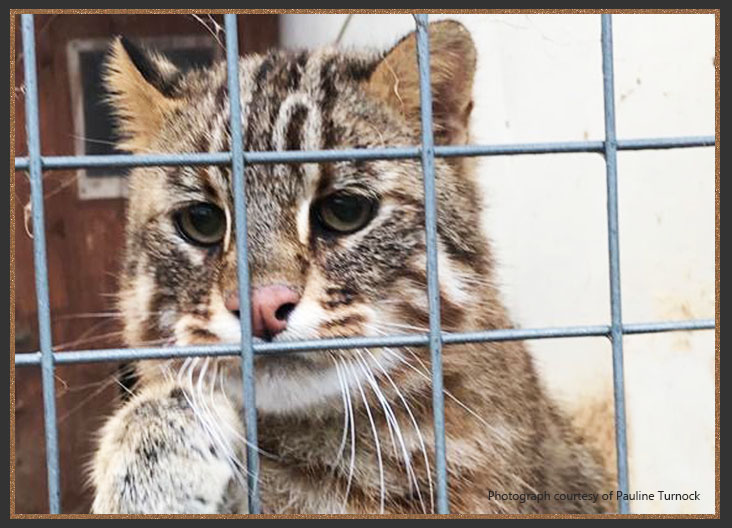
The Asian Leopard Cat has a relatively small head with a short narrow muzzle, large round eyes and black ears each with a white spot on the back. All have a white underside, throat and cheek-flashes and bear impressive black markings; either spots, arrow heads or rosettes.
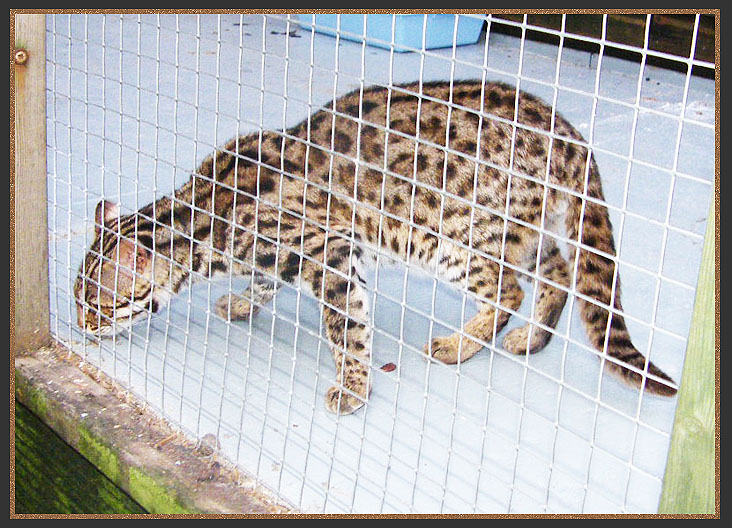
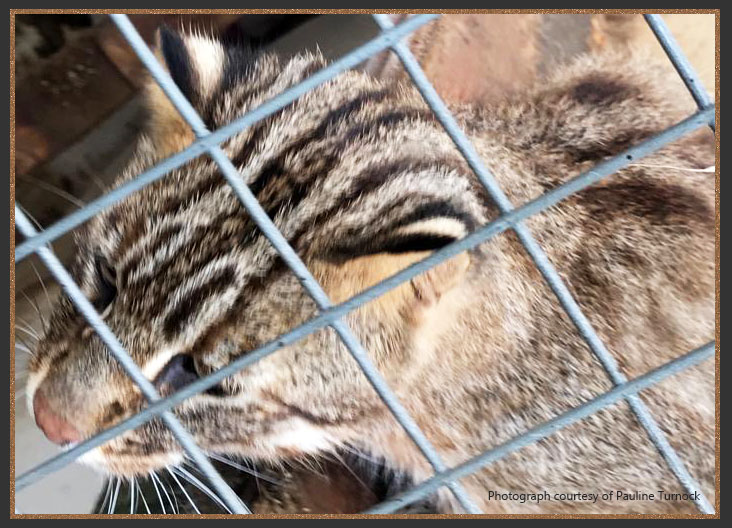
It is very athletic cat and is a skillful tree climber and accomplished swimmer and fisher with accordingly webbed feet. It is also a nocturnal cat that during the day spends its time in hollow trees, cavities under roots or caves where there are no humans. Being solitary and reclusive, it will hunt at night and alone.
Asian Leopard Cats are carnivorous and feed on a variety of small prey including mammals, snakes, lizards, frogs, amphibians, birds, wood mice, shrews, hares rats and insects. Their diet is often supplemented with fruit, grass, eggs, poultry, and aquatic prey.
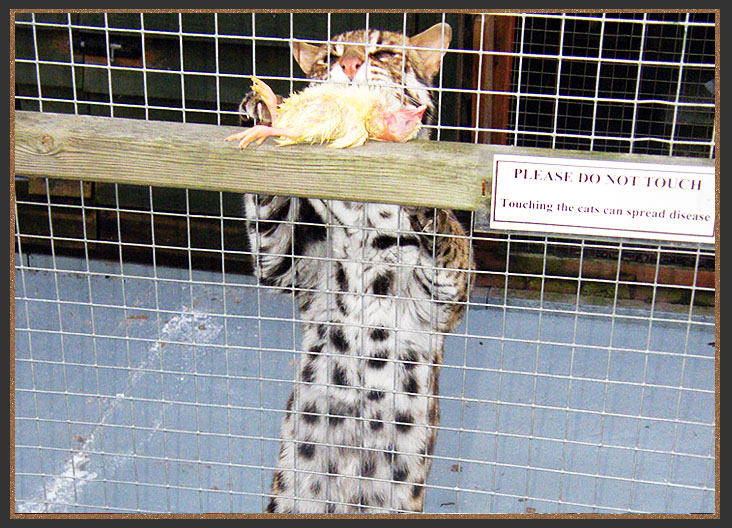
Keeping an ALC as a pet is possible but a DWA License is required in most places. However if you are attracted to the look of the Asian Leopard Cat but are looking for a pet with a domestic temperament, I would recommend that you consider purchasing a Bengal cat.
Sources: Wikipedia, Millwood Milestones and Bengalcat.co.uk




